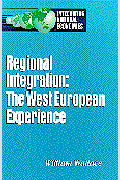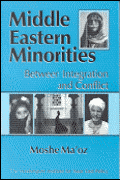A recent Chalkboard essay and a new book by Professor Matthew Delmont contend that school “busing” was a fake issue, that it was simply “a selective way to label and oppose school desegregation.” To characterize the complex issue of school busing in this way seriously oversimplifies and distorts the actual history of school desegregation and misses the reasons why this public policy was so divisive. Moreover, since Delmont appears to endorse socioeconomic integration plans, I could invoke the aphorism, “those who fail to learn from history are doomed to repeat it.”
I, too, published a book about school desegregation.[1] My brief counter to Delmont’s argument is that “busing” was not a fake issue, but simply short-hand for mandatory desegregation plans, which bused students from their original school to schools across a city or county in order to attain racial balance.
Of course, regular busing is a long-established feature of school systems, and buses have always been used to transport children who live too far away from their school. And to Delmont’s claim, yes, busing was historically used in some southern school districts as an instrument of mandatory segregation, busing black children away from closer white schools to attend an all-black school. That use of busing, however, was ruled unconstitutional by the 1954 Brown decision.
Had the South accepted the Brown decision and immediately assigned students on the basis of geography, mandatory busing for desegregation might not have occurred. Instead, many southern states and school districts found ways to maintain segregated schools. A good example is New Kent County, Virginia, which had only two K-12 schools, one serving black and one serving white students. Instead of simply converting the two schools to an elementary and a secondary school, the Board adopted “freedom of choice,” which resulted in a few black students choosing the white school but no whites choosing the black school. This led to the famous Green decision in 1968 which rejected desegregation plans relying only on freedom of choice.
Running out of patience, the Supreme Court issued its 1970 Swann decision approving a comprehensive mandatory racial balance plan for Charlotte-Mecklenburg, a large city-county school district in North Carolina. For the first time, the Supreme Court approved a large-scale mandatory busing program to accomplish desegregation. This approach was adopted by lower courts widely throughout the south. While mandatory busing was controversial among parents–and it led to substantial white flight–there was little formal resistance to the policy by school boards. In effect, loss of neighborhood schools became the penalty for not dismantling the dual school system.
Passive acceptance was not the response when busing moved to northern school districts without a history of de jure segregation laws. Many civil rights advocates argued, like Delmont, that de facto housing segregation had sufficient state involvement to justify mandatory desegregation remedies, but this thesis has, to this day, never been accepted by the Supreme Court. In fact, in its 1974 Milliken decision, the court specifically rejected a city-suburban desegregation plan for Detroit because suburban districts had not contributed to the segregation of the Detroit schools.
Thus when school busing moved north, there was intense controversy, although usually not as violent as that in Boston. In most northern school districts with desegregation cases, the public in general and white parents in particular did not believe they had committed any wrongs, constitutional or otherwise. They felt they were losing a “perceived” right to choose a neighborhood school or some other school of choice. Most often, they expressed their opposition by simply leaving the public schools, such as transferring to private schools or moving to another district.
The opposition to busing, therefore, was not primarily motivated by opposition to desegregation, or to attending school with students of another race. Rather, it was opposition to losing a long-standing policy of assigning schools by geographic proximity. This fact is best seen in parent surveys undertaken in school districts undergoing desegregation. In most instances, between 75 to 85 percent of white parents (and significant proportions of black parents) opposed mandatory busing, compared to over 80 percent of both groups who supported desegregated voluntary magnet schools. In my opinion, it is definitely the buses (representing loss of choice) and not the presence of black students that drives most opposition to mandatory desegregation plans.
I am not saying there is no racism involved in opposition to busing. White racism exists, and of course white racists opposed mandatory busing. The difference is that white racists oppose any kind of desegregation, voluntary or mandatory. Survey data in many desegregation cases studies (such as Los Angeles, Chicago, Savannah, and DeKalb County, GA) showed that a large majority of white parents support voluntary desegregation plans such as magnet schools, and indeed in most school districts magnet schools were very successful. But these same parents object to having their children being mandatorily reassigned from their existing school to another school in a different part of a city or county. The use of the term “busing,” therefore, was short for “mandatory racial balance plans,” and it is a perfectly acceptable way to describe the policy.[2]
This brings us to the more recent issue of socioeconomic integration (or busing) plans, which Delmont describes as “compelling because they are pragmatic and offer an end-run round the Supreme Court’s ruling against racial integration plans…” Is there any reason to believe that mandatory busing for economic integration would be any less controversial and divisive than mandatory busing for racial integration? I think not, because the underlying problem is the same–taking away parents’ perceived right to choose their children’s schools, especially when they want their children close to home.
We already have evidence on this from Wake County, North Carolina, which in 2000 became the largest school district to implement a comprehensive socioeconomic integration plan. Intense controversy ensued, not unlike that of the early busing plans for racial integration. Opposition groups formed, they put up anti-busing candidates in school board elections, and an anti-busing board was elected in 2009 which voted to end the socioeconomic busing plan in 2010. Some of the more outspoken anti-busing board members were replaced in 2011 elections, but so far the new board has not reinstated the socioeconomic busing plan.
Without doubt, “busing” became a charged term during the 1970’s, but calling it fake ignores critical facts about its symbolic meaning. For the vast majority of parents it meant loss of control over where their child went to school. Although this is not a constitutional right, mandatory busing plans abandoned a long-established method for assigning students to schools, replacing it with school assignment based on race and racial balance. While this idea has been popular with civil rights groups and many social scientists, it has never gained wide acceptance among the public at large.
[1] Much of the evidence presented here in this post is also presented in my book in greater detail. See David J. Armor, Forced Justice: School Desegregation and the Law (Oxford University Press, 1995).
[2] I was one of the first social scientists to use the term in my essay, “The Evidence on Busing.” published by The Public Interest in 1972.









Commentary
Why busing was definitely not a fake issue
08/01/2016